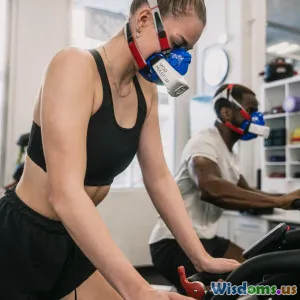
Best Bodyweight Exercises for Every Skill Level
7 min read Discover effective bodyweight exercises tailored to beginners, intermediates, and advanced fitness levels for optimal health and performance. (0 Reviews)
Best Bodyweight Exercises for Every Skill Level
Bodyweight training stands out as one of the most versatile and accessible forms of exercise, requiring no equipment and offering scalable challenges that cater to every fitness level. Whether you’re a fitness novice starting your journey or an advanced athlete striving to maintain peak conditioning, bodyweight exercises can build strength, increase flexibility, and improve endurance—all while reducing injury risk.
This comprehensive guide dives deep into the best bodyweight exercises tailored for beginners, intermediates, and advanced practitioners, grounded in sports science insights and practical application.
Why Choose Bodyweight Training?
Bodyweight workouts utilize your own body mass as resistance, offering unique benefits:
- Accessibility: No gym, weights, or machines required.
- Functional strength: Emulates natural movement patterns applicable to daily tasks and sports.
- Adaptability: Exercises can be modified to match skill level.
- Safety: Lower risk of injury compared to heavy weights when performed correctly.
Dr. Stuart McGill, a renowned spine biomechanics expert, emphasizes the importance of developing core stability using bodyweight drills to protect the spine and enhance athletic performance across ages [McGill, 2011].
Bodyweight Training for Beginners
Key Focus: Building a Foundation
Beginners should concentrate on mastering form, developing muscular endurance, and enhancing joint mobility. The goal is to prepare the body for more challenging exercises while preventing injury.
Recommended Exercises and Rationale
-
Wall Push-Ups
- Technique Tip: Keep the body straight from head to heels; feet about shoulder-width apart.
- Why: Builds foundational upper body strength with minimal load.
- Example: Perform 3 sets of 10-15 reps, resting 30 seconds between.
-
Glute Bridges
- Purpose: Activates the posterior chain, particularly the glutes and lower back.
- Evidence: Glute strength correlates with injury prevention in running and jumping sports [Powers, 2010].
-
Bodyweight Squats
- Focus: Learning proper knee alignment and hip mechanics.
- Tip: Sit back as if sitting on a chair, keep chest up and knees tracking toes.
-
Bird Dogs
- Why: Enhances core and lower back stability, essential for injury prevention.
Progression Guidance
After mastering these, gradually increase repetitions or move to more challenging modifications (e.g., incline push-ups).
Intermediate Bodyweight Training
Transition Phase: Building Strength and Control
Intermediates should challenge muscular strength, increase cardiovascular demand, and integrate balance and coordination components.
Key Exercises
-
Standard Push-Ups
- Authentic test of upper body and core strength.
- Tips: Engage the core, avoid sagging or raising hips.
-
Bulgarian Split Squats (Without Weights Initially)
- Enhances unilateral leg strength and hip stability.
- Science: Unilateral exercises reduce muscular imbalances linked to injury risk [Hölmich et al., 2014].
-
Plank Variations
- Side planks, forearm planks to improve core endurance.
-
Step-Ups Using a Bench or Sturdy Surface
- Builds functional leg strength.
Introducing Dynamic Movements
Including dynamic exercises such as jumping lunges or mountain climbers adds cardiovascular benefits and coordination.
Advanced Bodyweight Training
Goal: Maximal Strength, Power, and Skill Mastery
Advanced routines focus on explosive power, complex movement patterns, and muscular endurance at high intensity.
Power Moves and Progressions
-
Pistol Squats (Single-Leg Squats)
- Requires considerable balance, strength, and mobility.
- Tips: Use a support if needed; progress by lowering depth gradually.
-
Handstand Push-Ups
- Significant upper body and core challenge.
- Recommended starting with wall-supported handstands.
-
Muscle-Ups
- Combines pull-up and dip in a fluid explosive movement.
- Great for developing upper body power.
-
L-Sits and Front Levers
- Target core strength and isometric muscle control.
Combining Bodyweight Exercises Into Advanced Circuits
Using HIIT protocols with these exercises yields improved muscular endurance and fat loss, supported by numerous exercise physiology studies (e.g., Gibala et al., 2012).
General Tips for All Levels
- Form First: Quality over quantity is crucial for sustainable progress.
- Consistency Matters: Aim for at least 3 sessions weekly.
- Warm-Up and Mobility: Never skip a warm-up; dynamic stretches enhance performance and reduce injury.
- Rest and Recovery: Muscular adaptation requires recovery; listen to your body.
Conclusion
Bodyweight exercises offer a scientifically supported avenue to improve fitness at any skill level, promoting overall health without the need for equipment or expensive gym memberships. By following a structured progression—from foundational movements to advanced skills—individuals can build strength, boost endurance, and achieve well-balanced physical conditioning.
As fitness expert Mark Lauren says, “Your body is the ultimate gym,” and with the right approach, you will transform your capabilities using just your own body weight.
References
- McGill, S. (2011). Low Back Disorders: Evidence-Based Prevention and Rehabilitation.
- Powers, C.M. (2010). The Influence of Muscle Strength on Lower Extremity Mechanics and Injury Risk.
- Hölmich, P., et al. (2014). Eccentric Training for Patellar Tendinopathy: Injury Prevention.
- Gibala, M.J., et al. (2012). Physiological adaptations to low-volume interval training.
Embrace your own body as your gym and take your fitness to new heights with these tailored bodyweight exercises for every skill level. Start today and unlock your full potential.
Rate the Post
User Reviews
Other posts in Strength Training
Popular Posts














